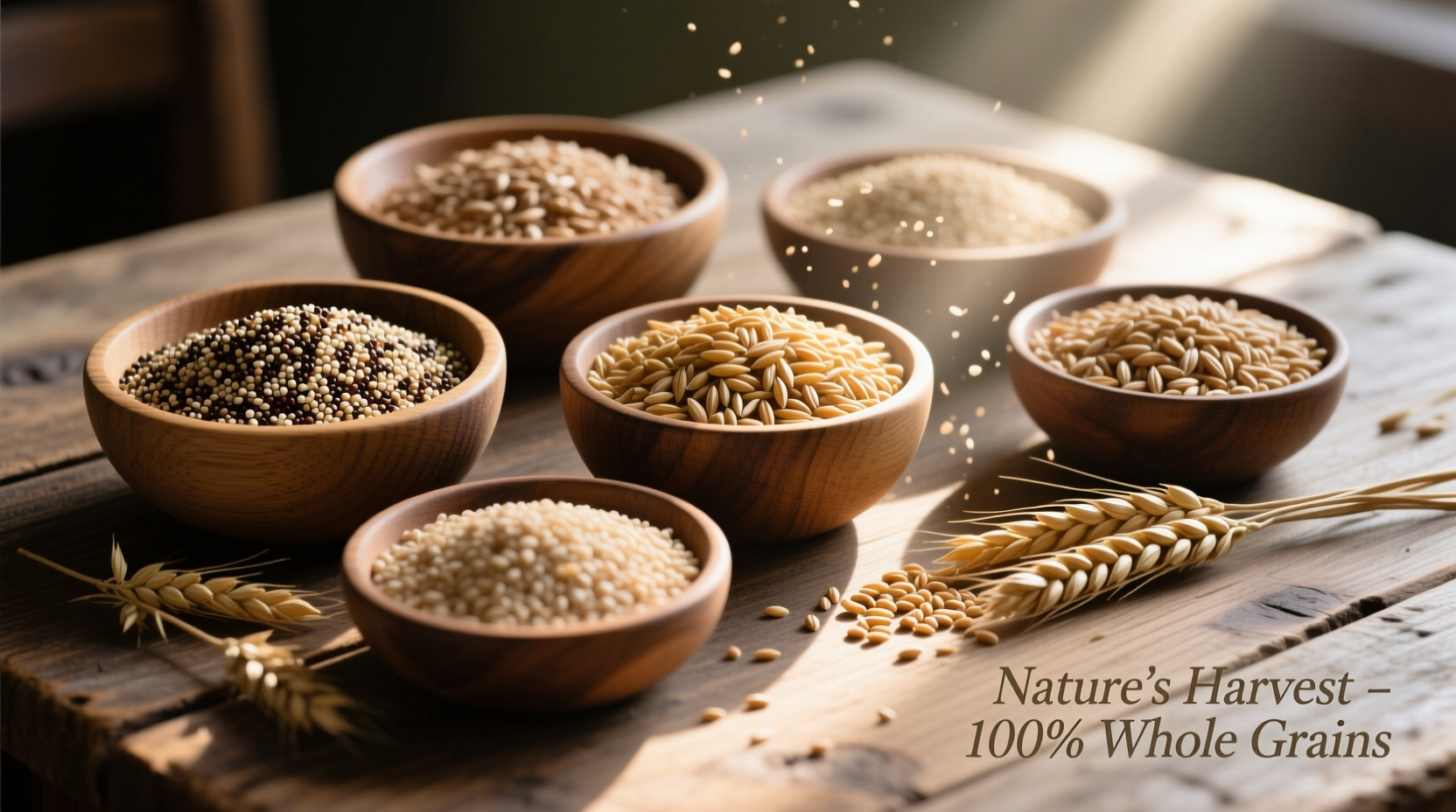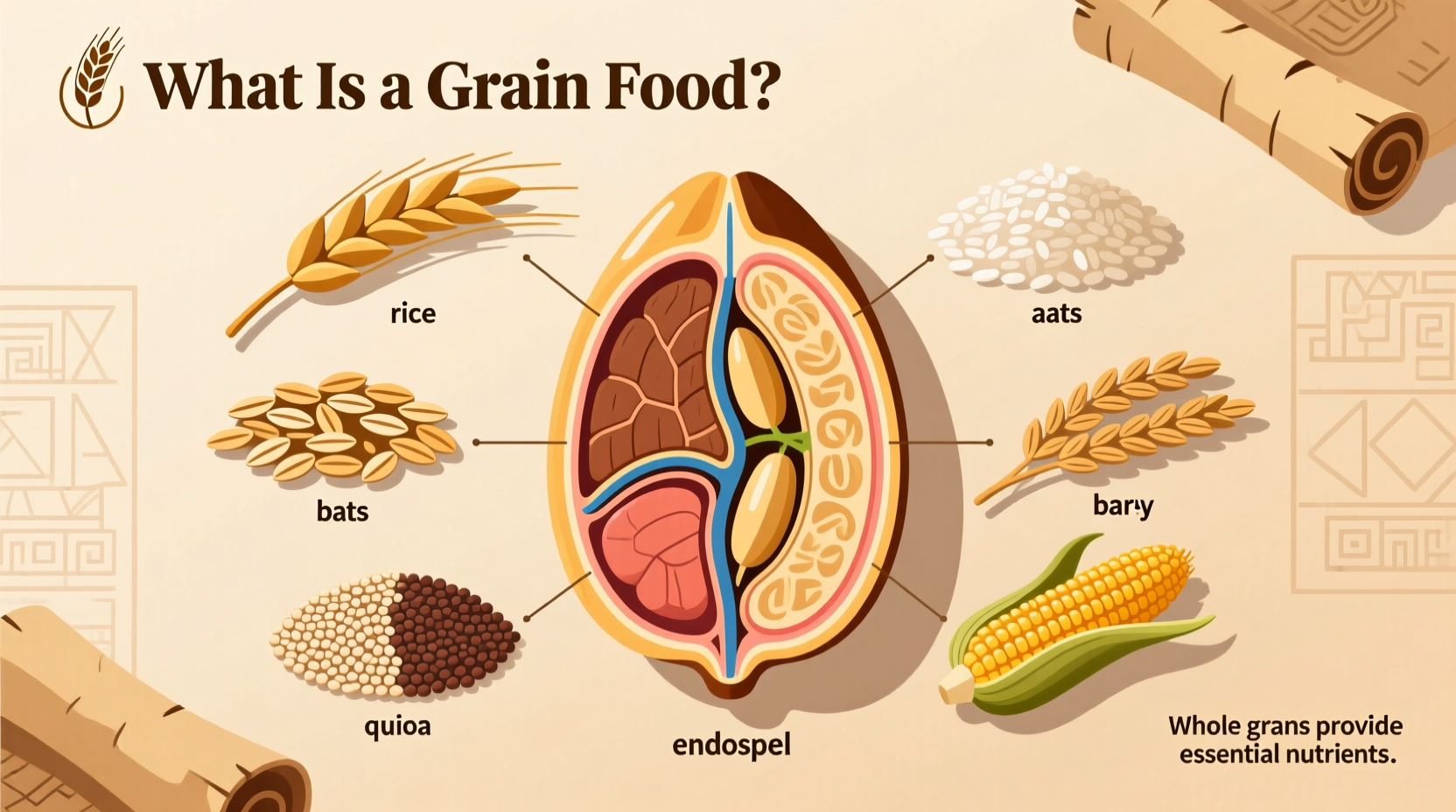Grain foods are edible seeds from grass-like plants, including wheat, rice, oats, cornmeal, and barley. Whole grains contain all three original parts—the bran, germ, and endosperm—providing essential nutrients like fiber, B vitamins, and iron. Refined grains have been milled to remove the bran and germ, reducing nutritional value.
Understanding what qualifies as a grain food unlocks better dietary choices and connects us to one of humanity's oldest food sources. Whether you're exploring nutrition basics or optimizing your meal planning, knowing the difference between whole and refined grains helps you make informed decisions about this dietary staple consumed by billions worldwide.
Your Complete Guide to Grain Foods
Grains have sustained civilizations for over 10,000 years, evolving from wild grasses to the diverse food group we recognize today. When you ask what is a grain food, you're exploring a category that provides approximately 50% of the world's daily calories according to the Food and Agriculture Organization of the United Nations. These versatile ingredients form the foundation of diets across virtually every culture, from Asian rice bowls to European bread traditions.
Breaking Down Grain Food Definition
At its core, a grain food comes from the seed of grass family plants (Poaceae). Each grain seed contains three essential components:
- Bran - The fiber-rich outer layer packed with B vitamins and minerals
- Germ - The nutrient-dense core containing healthy fats, vitamin E, and phytochemicals
- Endosperm - The starchy middle section providing carbohydrates and protein
When all three components remain intact after harvesting and processing, it's classified as a whole grain food. The U.S. Dietary Guidelines recommend making at least half your grains whole for optimal nutrition.

Whole Grains vs. Refined Grains: What's the Difference?
| Characteristic | Whole Grains | Refined Grains |
|---|---|---|
| Processing | Minimal processing preserving all three parts | Milled to remove bran and germ |
| Nutrient Content | High in fiber, B vitamins, iron, magnesium | Reduced fiber and nutrients (often enriched) |
| Examples | Brown rice, quinoa, whole wheat bread, oats | White rice, white bread, regular pasta |
| Digestion Speed | Slower digestion, sustained energy | Faster digestion, quicker blood sugar spikes |
This comparison reveals why nutritionists consistently recommend what are examples of grain foods to prioritize whole varieties. The milling process that creates refined grains removes 25% of the grain's protein and up to 80% of key nutrients, according to research published in the American Journal of Clinical Nutrition.
Evolution of Grain Consumption Through History
Understanding what is considered a whole grain becomes clearer when examining how humans have interacted with these foods throughout history:
- 10,000 BCE - First evidence of wild grain harvesting in the Fertile Crescent
- 8,000 BCE - Systematic cultivation of wheat and barley begins
- 3,000 BCE - Rice cultivation develops in China
- 1800s - Industrial milling separates grain components, creating refined white flour
- 1940s - Nutrient enrichment begins to address deficiencies from refined grains
- 2005 - U.S. Dietary Guidelines first recommend making half your grains whole
- Today - Ancient grains like quinoa and farro gain popularity for nutritional benefits
This historical perspective shows how technological advances changed our relationship with grain foods, sometimes at the expense of nutritional quality—a key consideration when evaluating are grains good for you.
Practical Benefits of Including Grains in Your Diet
When exploring nutritional benefits of eating whole grains, research consistently shows several advantages:
- Reduced risk of heart disease (22% lower risk according to American Heart Association studies)
- Better digestive health through increased fiber intake
- Improved blood sugar management compared to refined carbohydrates
- Help with weight management due to higher satiety levels
- Rich source of essential nutrients often lacking in modern diets
The Centers for Disease Control and Prevention reports that only 10% of Americans consume the recommended amount of whole grains, highlighting a significant nutrition gap many could address by understanding what is a grain food and its importance.
When Grains Might Not Be Your Best Option
While grains provide substantial benefits for most people, certain contexts require modification:
- Gluten sensitivity or celiac disease - Requires avoiding wheat, barley, and rye
- Specific medical conditions - Some digestive disorders may necessitate temporary grain restriction
- Dietary preferences - Low-carb or ketogenic diets limit grain consumption
- Individual tolerance - Some people experience digestive discomfort with certain grains
For those with celiac disease, the Celiac Disease Foundation emphasizes strict avoidance of gluten-containing grains. In these cases, naturally gluten-free grains like rice, corn, and quinoa become essential alternatives.
How to Incorporate More Nutritious Grains Into Your Meals
Transitioning to more whole grains doesn't require drastic changes. Try these practical strategies:
- Replace white rice with brown rice or quinoa in your favorite dishes
- Choose 100% whole wheat bread instead of refined varieties
- Add barley or farro to soups and stews for extra texture and nutrition
- Experiment with ancient grains like amaranth or teff for variety
- Start your day with oatmeal instead of refined cereal options
The U.S. Department of Agriculture's MyPlate guidelines recommend adults consume 5-8 ounce-equivalents of grains daily, with at least half coming from whole grains. For context, one ounce-equivalent equals one slice of bread, half a cup of cooked rice or pasta, or one cup of ready-to-eat cereal.
Common Misconceptions About Grain Foods
Several myths persist about grains that deserve clarification:
- "All grains are fattening" - Whole grains actually support weight management through their fiber content
- "Grains cause inflammation" - Research shows whole grains generally have anti-inflammatory effects
- "Humans aren't designed to eat grains" - Archaeological evidence shows grain consumption for millennia
- "Gluten-free means healthier" - For those without gluten sensitivity, this isn't necessarily true
Understanding these nuances helps answer the question why are grains important in diet while making informed personal choices.











 浙公网安备
33010002000092号
浙公网安备
33010002000092号 浙B2-20120091-4
浙B2-20120091-4